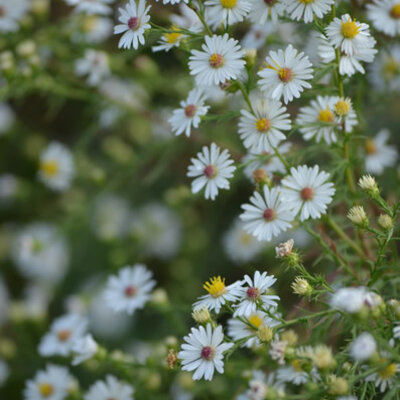
Aster pilosus - Asters
This highly floriferous species reaches a height of 1 m and, from September to October, produces an abundance of white flowers with yellow centers and leaves trimmed with numerous white hairs.
Asters are a rich autumn source of pollen and nectar for many pollinators.
in bucket
Perennial seeds require a wintering period for germination. Place them in the fridge for 60 days before sowing in the spring. Sow in trays on the surface, then press lightly. When the plants have 5 or 6 leaves, transplant into individual pots or directly into warmed soil. Autumn sowing is done in the same way and left outdoors until spring.
February, March, April, September, October, November
August, September, October
in the ground, in pot
semi-shade, sunny
medium
all floor types
drained, rich
Symphyotrichum pilosum
mid-season
200 seeds
White
From 80 to 100 cm
elongated
North America
This species was used by the Meskwaki, Navajo and Ramah peoples to treat gastrointestinal problems, eye inflammation and poisonous snake bites, and by the Zuni and Iroquois peoples as a febrifuge, to treat wounds and nosebleeds. Its roots were used by the Chippewa, Cree, Woodlands and Iroquois peoples to treat tuberculosis, typhoid, pneumonia, fevers, colds and kidney disorders. Also used in lotions by the Navajo and Ramah peoples for protection against witchcraft and by the Meskwaki people in sweat lodges, and by the Cherokee, Meskwaki, Potawatomi and Iroquois peoples to relieve diarrhoea, skin problems, as a stimulant, febrifuge and love plant.






